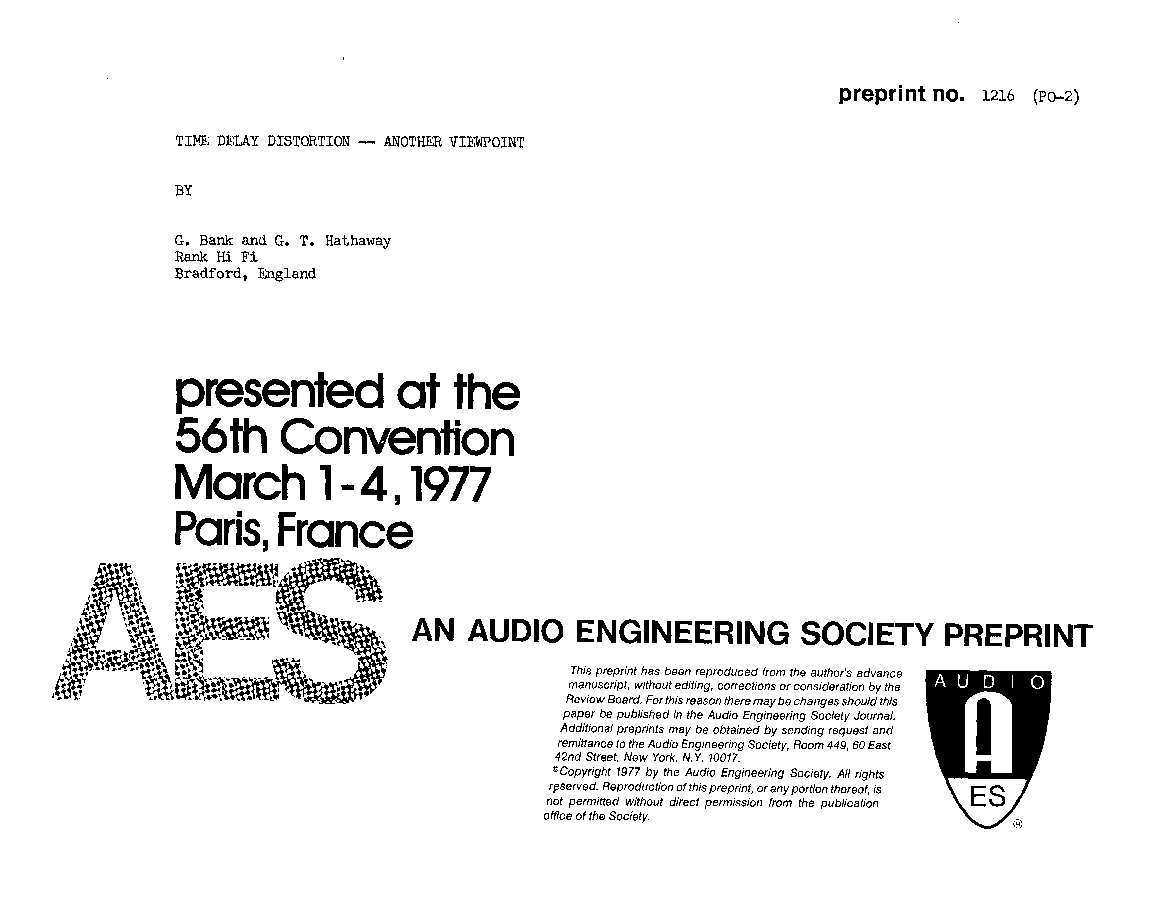Home / Publications / E-library page
You are currently logged in as an
Institutional Subscriber.
If you would like to logout,
please click on the button below.
Home / Publications / E-library page
Only AES members and Institutional Journal Subscribers can download
It is well known that the ear may not be sensitive to small phase perturbations. In a conventional flat-baffled two-way loudspeaker system, the positions of the sound sources are noncoincident in the crossover region. In this region, the interference effects give rise to amplitude distortions which, although clearly audible, can be difficult to isolate. Both computer simulations of the equivalent system and practical measurements show that it is possible to eliminate these interference effects in a conventional flat baffle loudspeaker provided that 1) both the amplitude and phase responses of the crossover network are arranged to complement the drive units, and 2) the signal to the high frequency unit is fed via a frequency independent delay line. By replacing this fixed delay with a stopped baffle, it now becomes possible to produce a loudspeaker with a frequency independent time delay. The use of filler drivers to achieve the phase relationship 0=aw, where 0 is phase angle between the radiated acoustic pressure and the loudspeaker drive signal and w is the signal frequency, gives a linear phase loudspeaker system correct to 0-Hz. In practice, providing that the loudspeaker produces a constant, frequency independent group time delay, within its passband, then the phase relationship 0=aw+b is indistinguishable from 0=aw.
Author (s): Bank, G.; Hathaway, G. T.
Affiliation:
Rank Hi Fi, Bradford, England
(See document for exact affiliation information.)
AES Convention: 56
Paper Number:1216
Publication Date:
1977-03-06
Import into BibTeX
Permalink: https://aes2.org/publications/elibrary-page/?id=3139
(525KB)
Click to purchase paper as a non-member or login as an AES member. If your company or school subscribes to the E-Library then switch to the institutional version. If you are not an AES member Join the AES. If you need to check your member status, login to the Member Portal.

Bank, G.; Hathaway, G. T.; 1977; Time Delay Distortion-Another Viewpoint [PDF]; Rank Hi Fi, Bradford, England; Paper 1216; Available from: https://aes2.org/publications/elibrary-page/?id=3139
Bank, G.; Hathaway, G. T.; Time Delay Distortion-Another Viewpoint [PDF]; Rank Hi Fi, Bradford, England; Paper 1216; 1977 Available: https://aes2.org/publications/elibrary-page/?id=3139